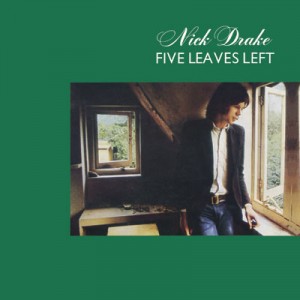The inimitable Nick Drake, recognized after his death as a brilliant songwriter but rarely before, is still the master of that brand of moody, emotive finger-picked acoustic guitar. The haunting melodies, the unshakable vocals, the ability to move through song: Nick Drake, an English songwriter but a speaker for deep veins of sadness and despair running through all culture, is still untouchable as a musician.
His first album, Five Leaves Left, was produced between 1968 and 1969, when Nick was 20 and 21. Keith Morris was asked to photograph Nick for the album cover by the album’s producer. Incidentally, this was the first album cover Keith would work on, and it’s one that defines him still today. The moment for both young artists, both near the start of their careers, was the first in an unfortunately cut short collaboration between the two, in which Keith photographed Nick in conjunction with each of the three legendary Nick Drake albums: Five Leaves Left, Bryter Later, and Pink Moon.
• Visit the Keith Morris Gallery online for more of the iconic photographs of Nick Drake.
Keith, still, had little chance to engage the elusive Nick Drake; despite being the only professional photographer to work with Nick, he hadn’t worked with him aside from the work the three albums — and then, on but a single day for each.
The artwork taken for Five Leaves Left, the first of those opportunities, captures the young Nick Drake looking perhaps as contemplative as his early music. The photograph used for the front of the album depicts Nick gazing out a window, and presumably, the only light in the room being the natural light coming from the two windows seen in the photograph. The strong shadows cast by only in the corners of Nick’s Hampstead flat set the mood for the music: The whole thing is not cast in shadow, though certainly parts of it are. The play between the light and the dark serves as a visual metaphor for the bleakness and the exuberance heard contrasting in Nick Drake’s guitar work and vocals.

The photograph from the reverse side of Five Leaves Left. © Keith Morris. Image used under Fair Use rationale.
The photograph on the reverse side is as much revealing, but it exists more as a metaphor of Nick Drake’s musical attitude than of the musical performance. Nick, against a brick wall, is still, and again, he is gazing into the distance. It’s not the gaze of a combat-hardened soldier, that thousand-yard wear gaze. Nick is instead looking almost wistfully into the distance, unaware that, ahead of him, people are running by, carrying about with their busy lives. The specific photograph in the series depicts a man, perhaps a businessman, running into the frame in some sort of rush.
Through the visual metaphor of Morris’s photographs, the album gains additional valuable meaning that could not be achieved without a visual narrative, as non-literal as it may be. There is a specific art in capturing the combination of weariness and optimism that is packaged gracefully in Five Leaves Left: Keith Morris, for his part, tells the story of Nick Drake, the musician, through these two beautiful photographs, and through the others he took throughout the musician’s tragically short career.


